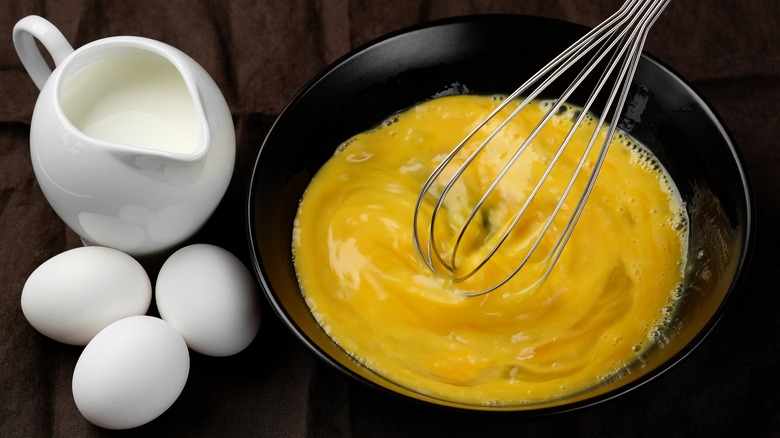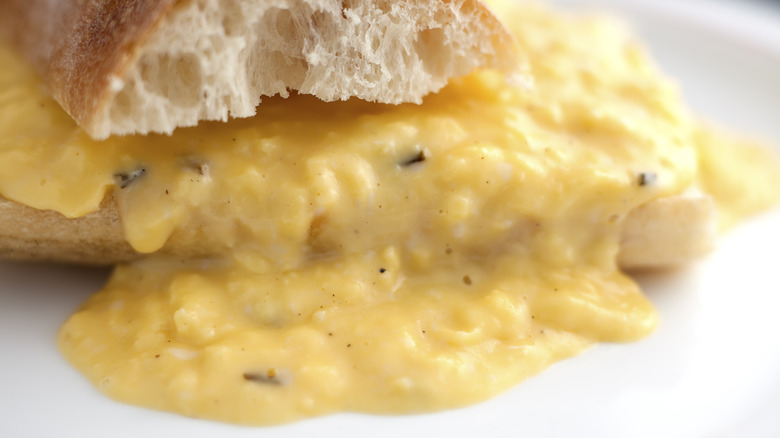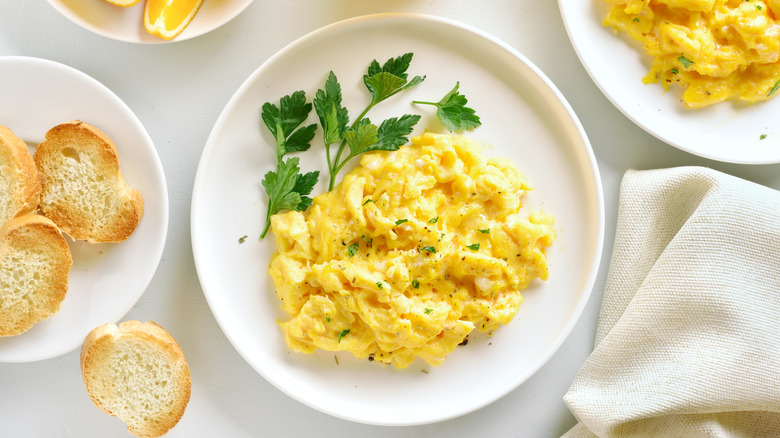French Vs. American Scrambled Eggs: What's The Difference?
It must have been a brave (or desperate) person to first try to eat a chicken's egg. While today eggs are a beloved home staple used at all three meals of the day and in plenty of baking recipes, the first time someone decided to ingest it on their own must have been a daring experiment.
According to Incredible Egg, people have actually been consuming eggs for about six million years. Recipes made by cooking eggs also became easily widespread. As the Kitchen Project points out, it's hard to even determine the origin of some foods like the frittata, or omelet because they are each so similar in their own ways, and have multiple origin legends.
It's not surprising then that even a dish as simple as scrambled eggs has multiple iterations. Two of the most popular iterations out there are the American and French styles, but how different could two different styles of whipped, cooked eggs really be?
French scrambled eggs
Like most things in French cooking, French scrambled eggs are defined by their rich, luscious flavor according to Cook's Illustrated. This can come from the extensive use of butter that would make Julia Child proud, but Cook's Illustrated found that it isn't always necessary. Instead, the rich flavor came from slow cooking on low heat which usually features cooking times well over ten minutes. Make no mistake, this style of eggs is for the patient, but it is one of the best ways to have a restaurant-quality breakfast at home.
Cook's Illustrated says that when you're finished cooking though, you'll have tiny, delicate curds throughout a rich, yellow sauce perfect for serving over toast. While most will reach for a frying pan when preparing this version, Jamie Oliver prefers using a bain Marie to give the eggs a truly gentle cooking time. Serious Eats adds that this slow cooking time doesn't mean you can ignore your eggs as they cook. You'll need to return frequently and stir the eggs to continue breaking up the curd as it starts to form. This will also result in a flatter, soupier-looking scrambled egg. By stirring these eggs so much while they cook, it doesn't form the same structure which means that they will appear mostly liquid, and won't have any pockets to trap bubbles of air and gas inside.
American scrambled eggs
The most notable difference between these two styles of scrambled eggs is their texture. While the French is soft, creamy, and littered with delicate curds, the American style is more dry, well cooked, and can be described as 'harder,' per The Cookful.
This texture is due to the higher heat that cooks the eggs all the way through, and a less active cooking period. Instead of the French's constant whisking, Jamie Oliver recommends simply dragging cooked sections of the egg into the center as they begin to set over medium heat. This creates longer curds that fold onto one another gently, similar to an omelet, rather than making a sauce for the curds to swim in.
Insider says that even on medium heat these eggs will start to set up in about a minute making them a far quicker cook than their French counterpart. This style of preparation is frequently referred to as 'diner eggs' because it is so commonly found in America's original fast-casual eating establishments.


